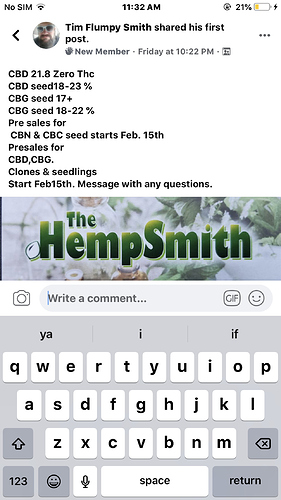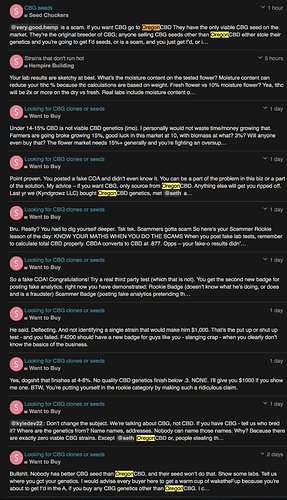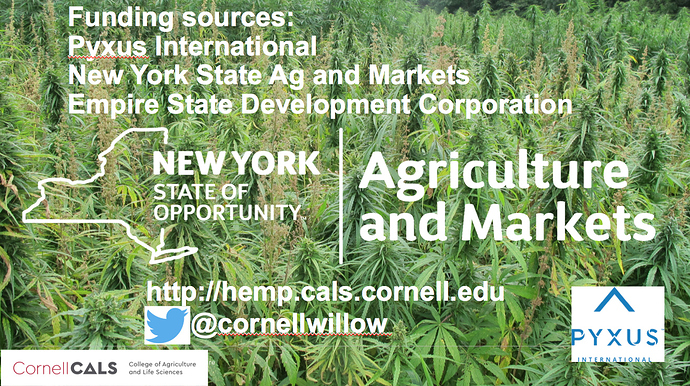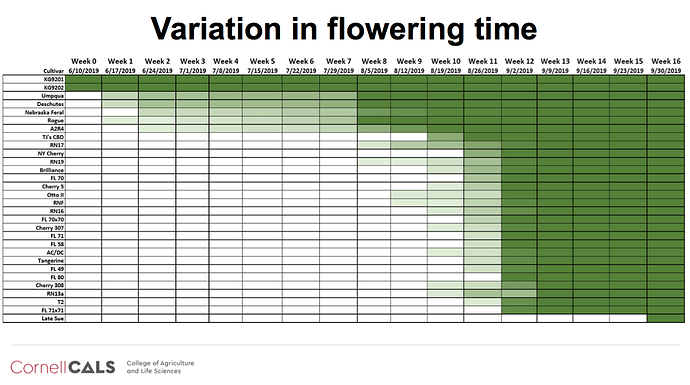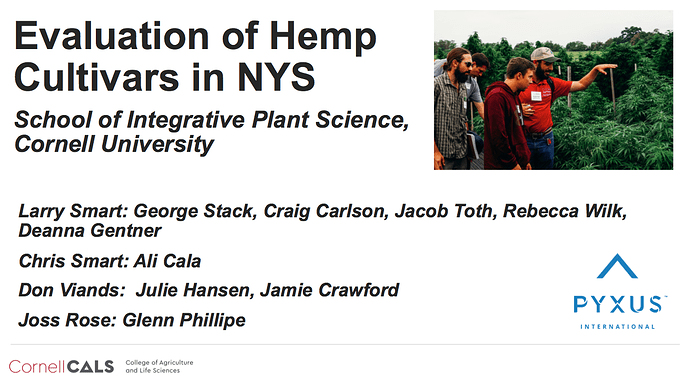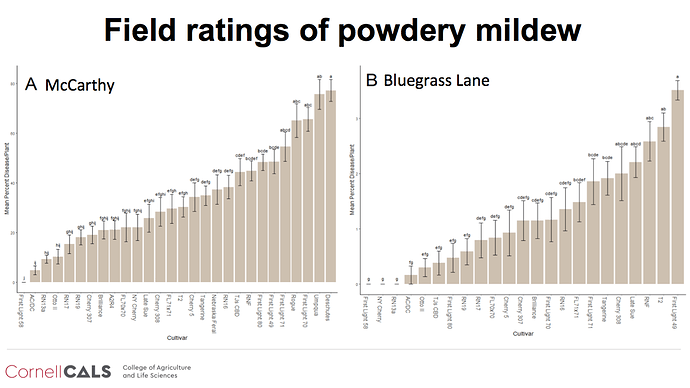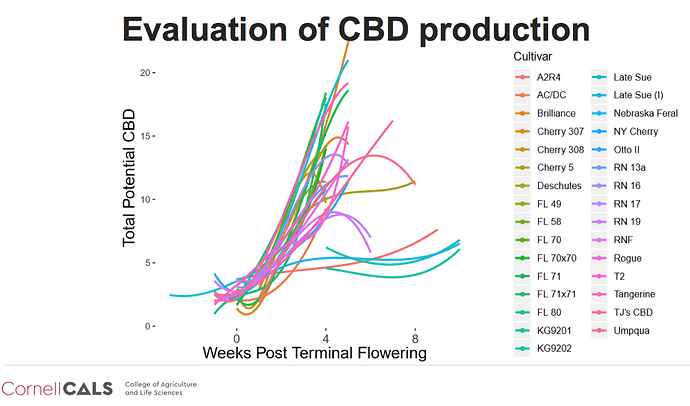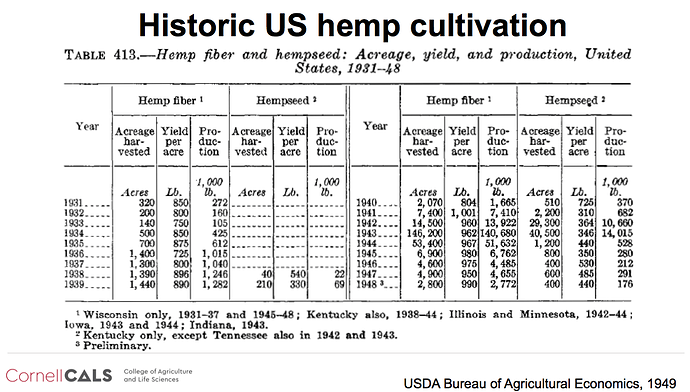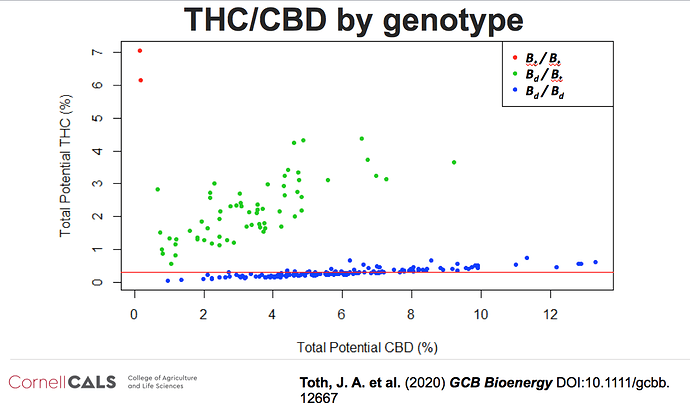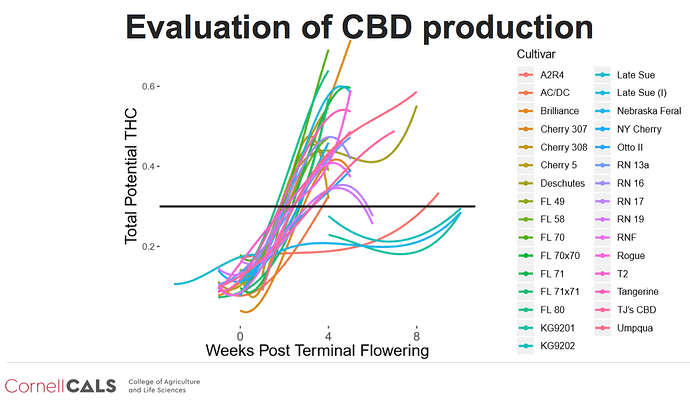You’re right, they can be derived from CBGa, that’s a good point… hmmmmmm ![]()
I don’t know shit about genetics either lol
It is my understanding that the Type 4 Chemotype cultivars have both THCa and CBDa synthase “turned off” enabling the plants to bioaccumulate CBGa the precursor to all cannabinoids. Luckily we have a resident expert on the subject @seth that can chime in and correct anything I may have wrong ![]() Credit : Oregon CBD Farmers Resources I Oregon CBD I The Trusted Source for Feminized Hemp Seed
Credit : Oregon CBD Farmers Resources I Oregon CBD I The Trusted Source for Feminized Hemp Seed
The Detailed Answer
Figure 1. Whole Sequence Cannabis Genome Browser

When THC production genes are turned “on” and CBD is turned “off,” plants are THC dominant, psychoactive, and are considered type I (recreational and medical). When both CBD and THC genes are turned “on,” plants are moderately psychoactive (as CBD lessens the psychoactivity of THC) and are considered type II (medical). When CBD production genes are turned “on” and THC is “off,” plants are considered type III (industrial hemp). When both THC and CBD production genes are “off,” plants only bioaccumulate CBG and are considered type IV (also industrial hemp). When upstream cannabinoid production precursor genes are turned off, no cannabinoids are produced (only terpenes), and the resulting plants are considered type V (“cannabinoid free,” also industrial hemp).
Figure 2. Cannabis Chemotype Typology
 Even with the THC genes “off,” type III and IV plants still produce a small amount of THC; the reason for this was unknown until we discovered the answer in early 2019. After tens of thousands of chemical and genetic tests (including whole genome sequencing of hundreds of plants), we now know that THC accumulation in type III and type IV varieties is due to CBCA genes, located on chromosome nine (remember: CBD and THC genes are located on chromosome six).
Even with the THC genes “off,” type III and IV plants still produce a small amount of THC; the reason for this was unknown until we discovered the answer in early 2019. After tens of thousands of chemical and genetic tests (including whole genome sequencing of hundreds of plants), we now know that THC accumulation in type III and type IV varieties is due to CBCA genes, located on chromosome nine (remember: CBD and THC genes are located on chromosome six).
Figure 3. Cannabis Chromosomes
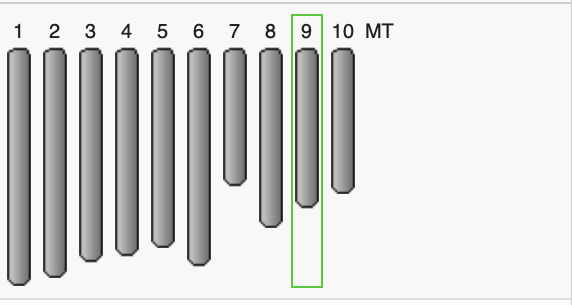
The CBCA synthase primarily produces trace amounts of CBCa, but, because of its 99% DNA sequence identity to the THCA synthase, it also produces similarly low levels of THCa. The latest research on these genes indicates that small variations in CBCA alleles (specifically, single nucleotide polymorphisms or SNPs) affect their conversion efficiency of the cannabinoid precursor CBGa to either CBCa or THCa. Additionally, the total copy number of CBCA gene loci play a critical role in determining final THC concentrations as well; after sequencing hundreds of type III plants, we have found that all have between 6-8 copies of the active allele and this number is directly related to ratio inheritance (and therefore total THC potential). This is not unique to our plant collection; rather, it is the case for all commercially available type III varieties. The ramifications of this finding should become the death-knell of the scientifically invalid 0.3% THC limit.
In our high cannabinoid hemp research programs, we have encountered plants that range from .05%-1% THC by dry weight on trimmed flowers. This means the federal limit of 0.3% is socially constructed rather than scientifically accurate (unless only leaves are tested!), but we must currently abide by this mandate, which makes sampling protocols and test-timing critical. High cannabinoid hemp farming is still possible (as evidenced by the explosion of this industry), but seed selection is also paramount for success. Farmers must consider a seed variety’s CBD:THC and/or CBG:THC ratio, total cannabinoid content, and appropriate sample timing in their state to achieve good results, as all three of these variables play critical roles in successfully growing a full-term crop of legal, industrial hemp.
Type IV (pure CBG plants) can happen, theoretically, in a number of ways. In practice, we have evidence of 3 specific routes. (1) double deletion of the THCAS and CBDAS synthases. This is the case in the monoecscious fiber variety “Santhica 27”. (2) Abnormal “nonfunctional” CBDAS synthase in the presence of a normal nonfunctional THCAS synthase. (3) Abnormal “nonfunctional” THCAS synthase in the presence of a normal nonfunctional CBDA synthase.
Other theoretical methods would include the introduction of exogenous forces to shutdown protein expression (i.e. gene silencing via virus or viroid).
I put “nonfunctional” in quotes up there because all of the genes we have found that lead to CBG accumulation have a tendency to maintain catalytic activity for creating other compounds when the precursors are available…which is super super interesting. Synthases (THCA, CBDA, and CBCA) are promiscuous and all retain the ability to create many different chemical products depending on what precursors they are fed. See attached paper from 2018. Elucidation of structure-function relationship of THCA and CBDA synthase from Cannabis sativa L.pdf (1.1 MB)
Bevan Used pictures from my nursery to try and sell me plants. Pictures that I took of plants I grew. He wasn’t even adversing them as the right strain. When I called him out and showed him pictures from the same photo shoot that didn’t make the cut ,he blocked me. I’d be careful buying anything from them
That guy is AN ALL CAPS kind of guy.
He claimed that he had crispr edited genetics and his profile said he worked at the roller derby
Can’t wait to start growing CBN.
Your lab results are sketchy at best. What’s the moisture content on the tested flower? Moisture content can reduce your tthc % because thc calculations are based on weight. Fresh flower vs 10% moisture flower? Yea, tthc will be 2x or more on the dry vs fresh. Real labs include moisture content of tested material. Your tests say:
“Testing results are based solely upon the sample submitted to Botanacor Laboratories, LLC, in the condition it was received”
For all of you guys thinking “hey why not grow some of that sweet ass 8% CBD”, keep in mind some states are going to be using '14 Farm bill rules next season and when you proudly harvest your 8% junk that may not finish below .3 tthc, you’ll have the pleasure of selling against 15+% material.
https://www.ams.usda.gov/rules-regulations/hemp/state-and-tribal-plan-review
Darwin will not treat you 8%ers well, or the guys who are so dum they buy fake CBG seed after all the warning out there from the scammers this last year. OregonCBD is the only place with viable CBG seed, everything else is junk, fake or stolen/renamed OregonCBD genetics. But that’s the nature of darwin, he takes care of you guys like he did with the DoDo.
8-10% material will never make you money. It will only make money for the guys selling 8-10% seeds/clones.
SteveLabman,
At this point, I feel that all I can do is politely insist that you stop making false and damaging claims…
- “your lab results are sketchy at best”
Our lab results are 100% valid. You have not taken the time to call and ask, or they would have happily confirmed every decimal point on that COA. That’s actually what the purpose of a COA – to certify the presented analysis is entirely accurate. Not one detail has been changed. I post unredacted COAs because I believe in building credibility through transparency. All of our flower samples are dried cured product. We have never once tested raw flower, as it does not best represent the finished product. You do not know this, and I do not fault you for that… we’re all still learning. However, to allege that Botanacor is not a ‘real’ lab, would be factually incorrect, as it clearly states on their website, they are ISO/IEC 17025 accredited by the American Association of Laboratory Accreditation.
- “your 8% junk that may not finish below .3 tthc, you’ll have the pleasure of selling against 15+% material”
My 8% ‘junk’ may be ‘junk’ to you, but it’s an ‘option’ to others. It’s one of three strong options for tTHC varieties that we grow/sell. Additionally, we are working in Maryland under the 2014 Farm Bill, so thankfully we are still a D9THC state (for now). Also, because we are in a D9THC state, we do grow/sell several +15% varieties (in addition to producing clones and seeds of those varieties). Not trying to be rude, but what I’m saying is – we are growing/selling both +8% and +20%, and like so many others, we will continue to serve those who are forced (by their state’s ultimate decision) to grow tTHC. Simply put, it’s not their fault they were dealt a rough hand this year (tTHC), so if I have something that might be of use to them, I’m going to make it immediately available.
- “OregonCBD is the only place with viable CBG seed, everything else is junk, fake or stolen/renamed OregonCBD genetics”
None of our COAs are for CBG. I don’t understand the relevance of this statement in your direct reply to me, other than to unnecessarily and unrelatedly shill Oregon CBD (which I noticed you’ve done four times in the past two days). I can imagine they have awesome CBG – just like their CBD. I’m rooting for @seth (and the entire Oregon CBD team), because they are serving our market on a level I’ve only dreamed of. Their success brings positive energy to the entire industry. The general consensus is that they are good to their people, and I like that about their company.
- “8-10% material will never make you money. It will make money for the guys selling 8-10% junk seeds/clones”
We actually sell clones of JxH, Z1, and KLR2 – but they are not ‘junk’ – they are strong options for states with strict tTHC compliance standards. All of our cultivars were legally produced in the State of Maryland (in partnership with a major University) as part of a sanctioned research project.
Also, this whole ‘attacking others’ thing you are doing… it should stop. If you need someone to talk to, reach out to me, I won’t turn you away just because you are mad or upset. If you were dealt a bad hand, maybe I can help you, but please stop lashing out at your colleagues, because it is not appreciated. I sincerely implore you to return to square one, call Botanacor, and politely ask them to verify the certificate(s) in question.
In closing, to summarize and support my dispute of your egregious claims (at least those which were aimed in my direction), I am including two attachments for reference… one is the email between Botanacor and myself, and the other is a screenshot of your recent activity (in case you weren’t already aware of it).
Edit: I removed (including the moisture content of the dry flower sample) because Botanacor doesn’t offer moisture testing at this time. The lab’s official response was that they test every sample as it is received, and do not document sample condition on the certificate.
Much love.
RE_ COA Review.pdf (120.3 KB)
Really? Where on that COA is the moisture content? Valid does not mean value. Without moisture content the data is worthless, as every data point is based on a weight that’s not quantified.
I would appreciate you working the maths on 6-8% hemp to show everyone how that makes money. Please justify how growing 6-8% hemp is “powerful” from an ROI.
Maybe its just my ignorance, but not growing weak genetics, and not losing money seems like the “powerful” option.
Presentation is listed on page above
Presentation by Larry Smart: Evaluation of Hemp Cultivars in NYS
School of Integrative Plant Science, Cornell University
Larry Smart: George Stack, Craig Carlson, Jacob Toth, Rebecca Wilk, Deanna Gentner
Chris Smart: Ali Cala
Don Viands: Julie Hansen, Jamie Crawford
Presentation by Larry Smart: Evaluation of Hemp Cultivars in NYS
School of Integrative Plant Science, Cornell University
Larry Smart: George Stack, Craig Carlson, Jacob Toth, Rebecca Wilk, Deanna Gentner
Chris Smart: Ali Cala
Don Viands: Julie Hansen, Jamie Crawford
![Screen Shot 2020-02-11 at 2.17.24 PM|690x406]
(upload://fPU01VY1nOdv9jyXZ6rzIlceUKU.png)
Presentation by Larry Smart: Evaluation of Hemp Cultivars in NYS
School of Integrative Plant Science, Cornell University
Larry Smart: George Stack, Craig Carlson, Jacob Toth, Rebecca Wilk, Deanna Gentner
Chris Smart: Ali Cala
Don Viands: Julie Hansen, Jamie Crawford
The quick and dirty: plants that produce 4-7% CBD may be under .3; however those plants are not economically viable so…
This makes a lot more sense now. Liquid Mellow was the company that caused me to post: PSA on Lab Testing
So what’s hitting good numbers and would pass in a strict state
you have to be more specific; no cbd with good yield (14+%CBD) will pass a test two weeks from harvest, measuring top 2" of flower. OregonCBG cbg genetics will, but no CBD worth growing.
I guess I did the impossible then. I was a little over 16% cbd. I suspect good soil, and having irrigation also helped. Dark soil is dark due to humate content. Humates accellerate nutrient uptake, and they also regulate moisture. Better soil requires less water. Not tilling it is another bonus.
In picking out genetics, the methods and conditions under which they are grown are just as important as selection of a strain.
I doubt it. You may have a lab result, just not an accurate one. I can say with 100% certainty you do not have 16% CBD and below .3 thc material, that will hold up to any real lab test.
